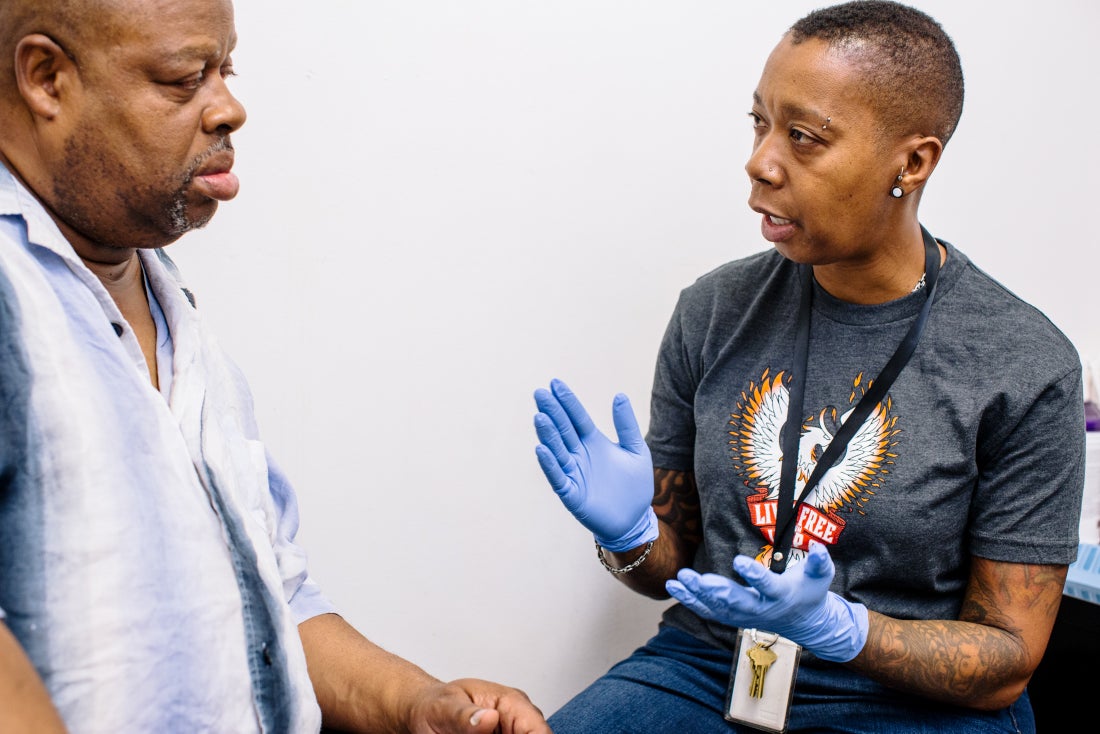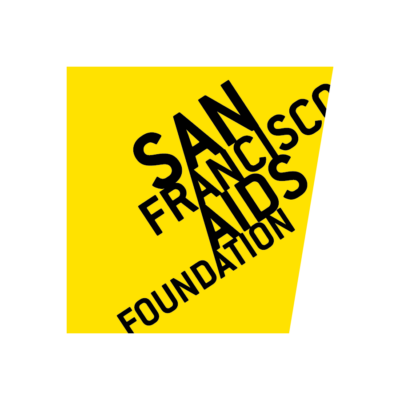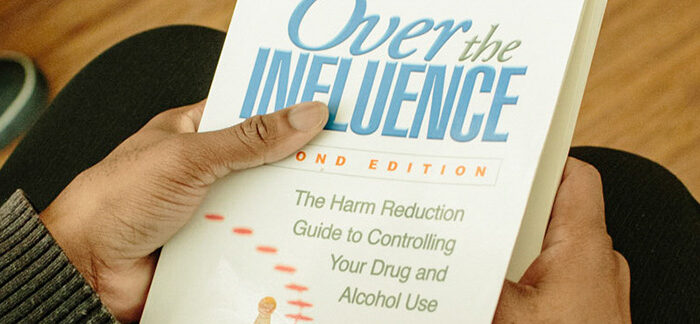Be good to people who inject & use drugs in medical settings

People who use stigmatized drugs like heroin, meth, or fentanyl oftentimes feel unwelcome in “traditional” medical settings, like emergency rooms or primary care offices. Staff and healthcare providers who work in these settings–inexperienced in how best to work with folks who use drugs–may inadvertently (or purposefully) foster an environment in which clients can feel judgment, stigma, and shame.
“It’s unfortunate that people who inject or use drugs experience things in medical settings that can lead to them simply avoiding medical care in the future,” said Ro Giuliano, director of Syringe Access Services (SAS). “You may have a phlebotomist who makes a negative comment when they see track marks on someone’s arm. Or have a nurse chastise you for not coming in to get an abscess treated sooner. Those are the types of things that create shame and push people away from health care.”
“Many healthcare workers aren’t attuned to the needs of people who inject and use drugs,” said John Halifax, a health educator with SAS. “We’re in the middle of a public health crisis right now. Overdose rates keep going up every year. We need everyone in public health doing what they can to keep people who use drugs healthy and well.”
That’s one reason our SAS team, in collaboration with UCSF Chief Resident Dr. Saundra Nguyen and medical students Tatyana Roberts and Jar-Yee Liu and San Francisco Health Network providers including Joanna Eveland, MD, Kathleen Chung, MD, Soraya Azari, MD, and Hannah Snyder, MD, embarked on a project to educate primary care providers about stigma related to substance use, provide safer use supplies, and give information about the supplies that people need to use more safely.
The “Primary Care Overdose Prevention Initiative,” championed by Dr. Eveland and Dr. Chung, included naloxone distribution at primary care clinics, expansion of buprenorphine treatment at San Francisco Health Network primary care clinics, and a “Safe Supply Pilot,” which provided safer consumption kits, with supplies for safer smoking and safer injection to primary care providers. Our SAS team provided the supplies for the Safe Supply Pilot, and developed a set of training videos that share the personal impacts of stigma on people who use drugs in medical settings. Additionally, a second set of videos were developed to break down the contents of the safer use kits and share how to talk about these resources with community members.
The training included a recorded conversation between Giuliano and other SAS health educators, talking about the ways that stigma shows up in medical settings.
“The health educators and I wanted to convey the ways that you could invite people in and have these open dialogues. What are ways that people have been shut down and shut out of conversation in the past? We talked about those types of experiences,” said Giuliano.
Participants reported that the trainings helped them, “have and express more empathy, without attaching moral judgements on behavioral choices,” “re-examine biases that [they] may not be aware of affecting [their] patient care,” and use “more neutral language around progress with substance use.”
One participant liked that the video “about real people talking about their life” helped humanize people who use drugs. They said, “People need to hear that somebody is a child, brother, sister. That they are human beings and to not put them down when we know they need help.”
In some of the videos, a SAS health educator explains the contents of safer smoking and safer injection kits. So that people who view the video understand, for example, why someone who smokes fentanyl will need a different kit than someone who injects fentanyl, and how the contents of each kit help someone reduce their risk of infectious disease (including COVID-19).
“We were worried about people passing out the wrong kits to clients. It’s a waste of resources if you need a crack smoking kit, and you’re getting a meth smoking kit. But more importantly, that kind of confusion doesn’t center the person who is receiving the supplies. The whole point of this project is to give people care that is tailored to their lifestyle and that meets their needs,” said Halifax.
The project sprang from the need to supply shelter-in-place hotels in San Francisco (which provided shelter to unhoused residents) with overdose prevention and harm reduction supplies, and then to educate people who worked in those hotels about the need for these supplies, what the supplies are, how to do wellness checks, and generally how to have conversations with folks accessing these supplies.
After these initial trainings, requests started coming in from other city agencies. Pharmacies, primary care clinics, navigation centers, and some congregate shelters reached out to the SAS team with requests on overdose prevention training and safer drug use supplies to provide to clients.
Efforts are underway to measure the impact of the anti-stigma training on providers, but so far the response has been overwhelmingly positive. Staff have reported that the personal narratives of people speaking about stigma have been meaningful, and that hearing them have helped to challenge some perceptions they have had.
“This training humanizes this topic. And it makes it obvious that people who use drugs are people, and should be treated that way,” said Halifax.










